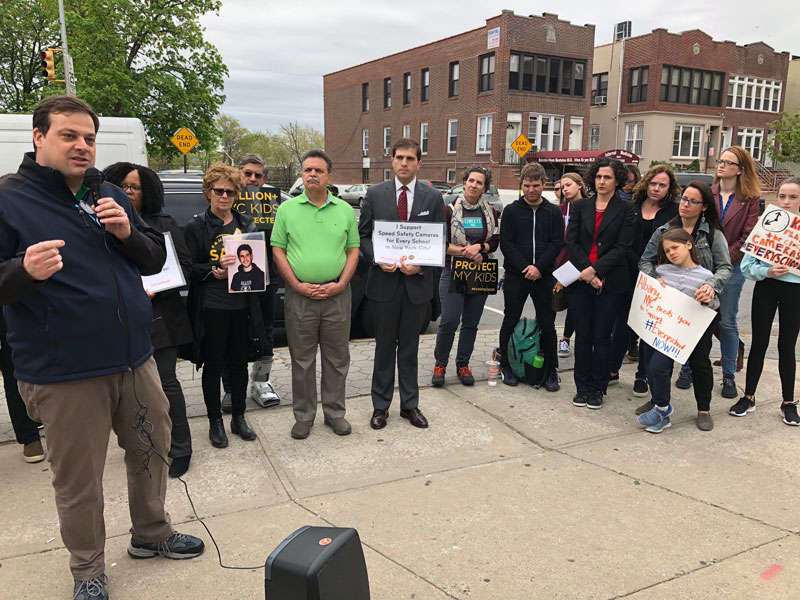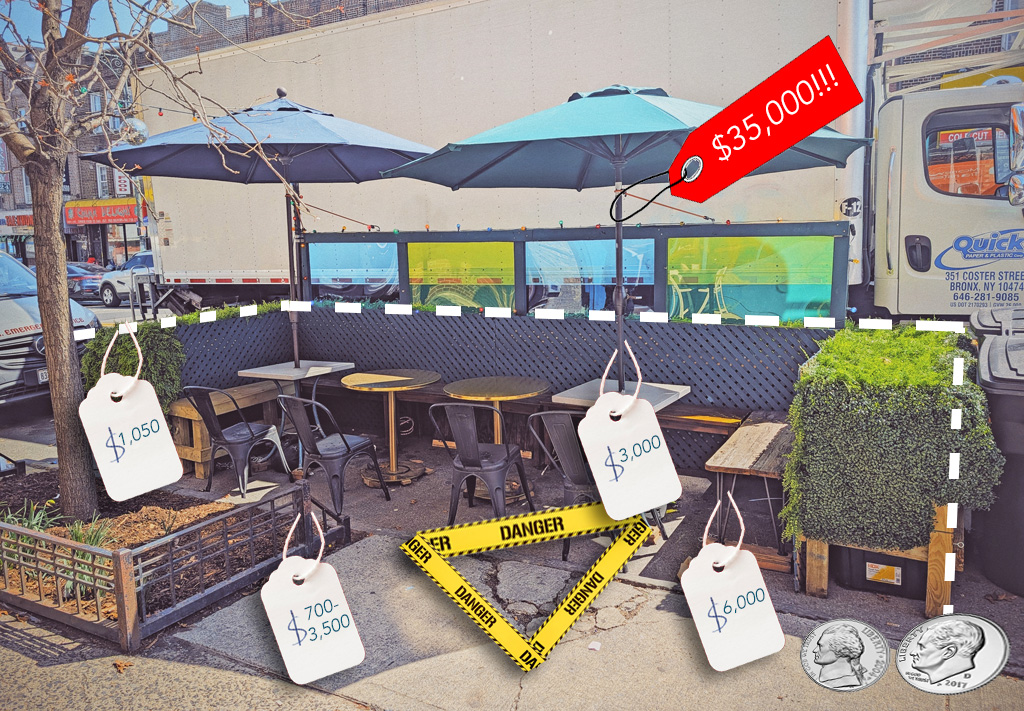State Senator Marty Golden supports the bill to increase the number of speed camera zones in New York City from 140 to 290, his chief of staff said at a rally in Bay Ridge yesterday.
"Senator Golden is on board, he supports the legislation to double the number of speed cameras," his aide John Quaglione announced.
Last year, Golden was one of the final holdouts in the State Senate against a bill to expand the city's automated speed enforcement program to 750 school zones, which had already passed the Assembly. After the legislation was watered down to a limit of 290 speed cameras, Golden reportedly agreed to support it, though he never signed on as a sponsor.
That left Simcha Felder, a Democrat who caucuses with the Republicans, as the primary obstacle to the bill in the waning days of the 2017 legislative session. Felder demanded that the de Blasio administration station armed police in every city school in return for his vote, and the speed camera bill died.
With Golden on the record in support of a speed camera expansion much earlier in the 2018 session, the focus on Felder will likely intensify. But if Senate Majority Leader John Flanagan allows a vote on the floor, Felder's vote might not be necessary.
Participants at yesterday's rally were fed up with the gamesmanship in Albany.
"I understand there are politics involved, I don't care, I want speed cameras," said Maureen Landers, a co-founder of Bay Ridge Advocates Keeping Everyone Safe (BRAKES). "We're getting impatient. There's no reason for it not to pass this time."
The most recent victim of reckless driving in the neighborhood is Jobe Kan, 10, who was struck by a motorist on 84th Street on April 30. Jobe sustained severe injuries and remains in intensive care.
With several years of data to go on, the evidence keeps piling up that speed cameras save lives and could have prevented the crash. At locations and times when speed cameras are in effect, speeding falls 63 percent on average, according to DOT. Traffic injuries have declined 14 percent at these locations, even though current law prevents the cameras from functioning outside of school hours.
The introduction and expansion of automated speed enforcement has coincided with a significant drop in citywide traffic deaths, from 299 in 2013 to 218 last year. Annual pedestrian fatalities have declined even more dramatically in the same timeframe, from 185 lives lost to 104.
And yet, because of Albany restrictions that limit where and when speed cameras can be turned on (only streets abutting a school entrance are allowed), they are inoperable at the time and location of 85 percent of severe traffic injuries and fatalities in NYC, according to DOT. Until the Republican majority lets a speed camera expansion bill come to the floor for a vote, New Yorkers will continue to lose their lives due to dangerous driving that could have been prevented with automated speed enforcement.






